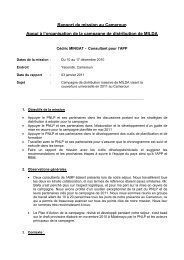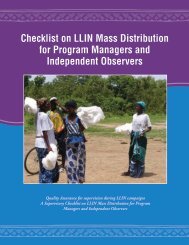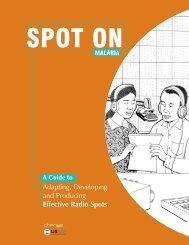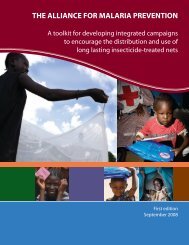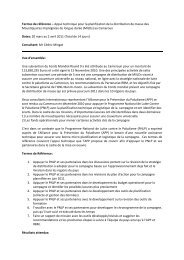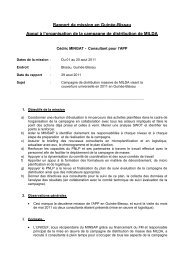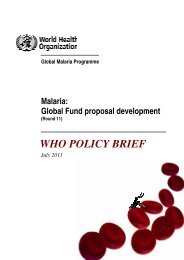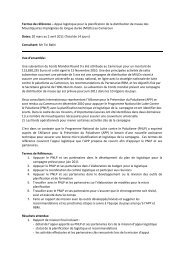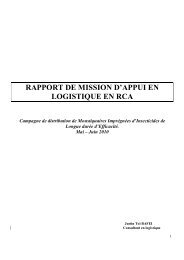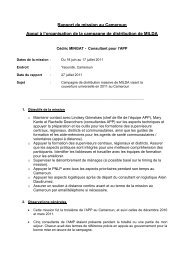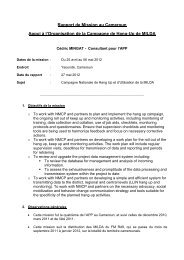Anambra State Post-Campaign Net Tracking Survey
Anambra State Post-Campaign Net Tracking Survey
Anambra State Post-Campaign Net Tracking Survey
You also want an ePaper? Increase the reach of your titles
YUMPU automatically turns print PDFs into web optimized ePapers that Google loves.
<strong>Anambra</strong> LLIN campaign evaluation<br />
Among households that received any net, the average number of LLIN given out per<br />
household was 2.15 with 8.3% receiving only one net and 12.0% receiving three net or<br />
more. Those getting only one net were preferentially small households with not more<br />
than 3 persons.<br />
Equity of distribution was good and in fact slightly pro-poor with a concentration index<br />
of -0.021 (0 being perfectly equitable and -1 totally in favour of the poorest).<br />
However, due to the lower than expected registration rate, the actual average number<br />
of LLIN delivered per household was 1.60.<br />
Retention of campaign LLIN<br />
Retention arte after 4 months was very high, 98.4% of the campaign nets were still<br />
present and 97.3% of households had retained all of their nets received from the<br />
campaign.<br />
Resulting net and LLIN coverage<br />
Estimated pre-campaign net coverage was 2.0% for any net with no difference between<br />
areas that were expected to have a higher coverage due to previous distributions.<br />
At the time of the survey, 64.3% owned any net and 57.3% any LLIN.<br />
The proportion of households with two or more LLIN (NMCP target: 80%) was 68.2%.<br />
When only households which had benefited from the LLIN distribution were considered,<br />
the resulting ownership coverage with at least one LLIN was 84.9% and with two or<br />
more 76.6%. However, when criteria “one net for every two people” was applied, only<br />
42.9% of sampled households had achieved this target.<br />
Hanging of nets and use<br />
Among households receiving any LLIN from the campaign, 77.0% reported to have hung<br />
their nets within at least one month of the distribution but at the time of the survey,<br />
only 46.9% of households had all their nets hanging and 61.1% of the campaign nets<br />
were found hanging. However, only 6.8% of household reported having had any<br />
difficulty in hanging the net.<br />
Due to the low hanging rate only 55.5% of the campaign nets were used the previous<br />
night; 36.2% had never been used. Most commonly reported reasons for non-use were<br />
“net was not needed2 and “net was still stored”. However, when the net was hung,<br />
90.1% were used last night and 84.9% were used every or most nights the previous<br />
week.<br />
Over the 4,362 usual (de-jure) household members who stayed in the house the<br />
previous night, 38.3% slept under a net. Use rates did not vary much between<br />
population sub-groups and were highest in children under five (44%) and lowest among<br />
children age 5-14 years (35%). However, in households that owned at least one net for<br />
every two people 68% of children under five had used a net.<br />
Behavioural Change and Communication<br />
Of all sampled households 67.2% reported to have received any messages on nets and<br />
net use at the time of the campaign and there was a clear correlation between the<br />
number of information sources exposed to and number of messages remembered for<br />
those that did. On average households mentioned 1.4 information sources. Main<br />
9



